Typically, when people hear about throwing used items into the ocean, they immediately think of littering and environmental pollution. In reality, there are over 5 trillion pieces of plastic in the ocean, with trillions more trapped in Arctic ice, making modern ocean sediment akin to a graveyard of plastic.
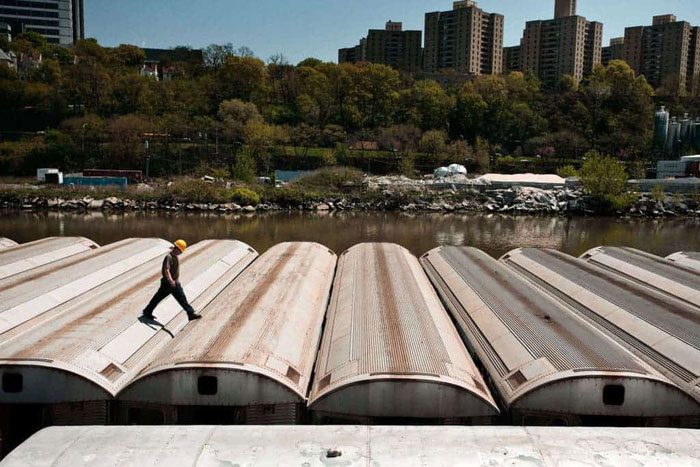
New York subway cars being dumped into the ocean for a good purpose.
In the United States, the New York City government has been disposing of its used subway trains in the ocean, and many would easily assume this is an act of environmental destruction. However, they are mistaken – over 2,500 subway cars from New York have been used and dumped into the ocean with the noble goal of creating an underwater reef for crustaceans and fish in the Atlantic Ocean.
After nearly six decades of service, the New York City Metropolitan Transportation Authority (MTA) retired all of its R-32 subway cars (the R-32 subway cars are considered iconic by New Yorkers). However, when these trains were retired, their journey took an unexpected turn.
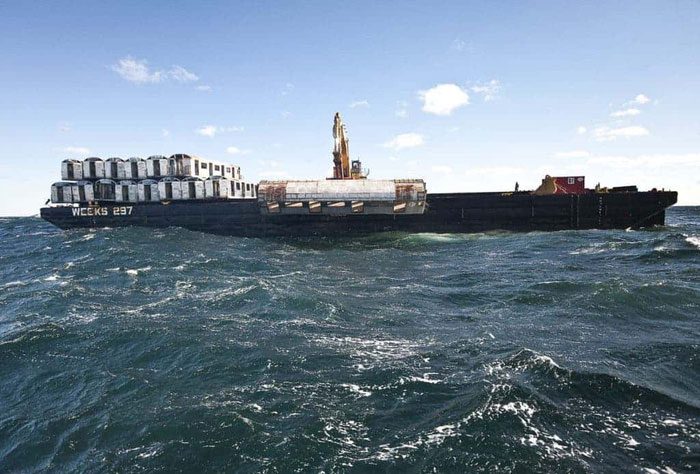
Images of subway cars being taken out to sea and dropped.
Over a span of three years, photographer Stephen Mallon from the Front Room Gallery captured images of subway cars being taken out to sea and dropped, where underwater creatures began to “care for” them, turning them into their new homes. His photographs are now displayed in an exhibition in New York.
“I read about the subway cars being thrown into the Atlantic, but I thought that project had ended,” Mallon said. “Then, in 2007, I was looking for new ideas and saw barges loaded with old subway cars.”
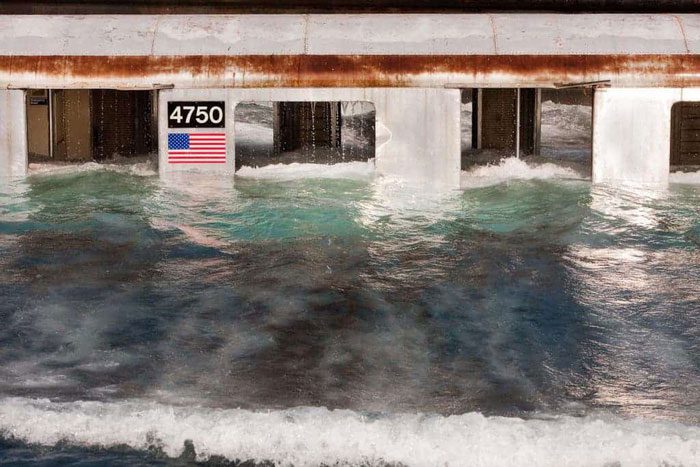
Old subway cars being reused as artificial reefs.
The subway cars were sent to coastal areas across Delaware, New Jersey, and Georgia. In an innovative program that began in the early 2000s, the MTA started handling retired subway cars by reusing them as artificial reefs. However, it’s not as simple as just throwing the cars into the ocean. The subway cars had to undergo significant modifications before they could begin their new underwater journey.
First, the old subway cars would have certain parts removed, such as wheels and anything else that could potentially harm the marine environment. They are then left as empty shells, cleaned to remove any pollutants. This process ensures that once the retired subway cars enter the ocean, they will function as benign structures that do not harm the marine ecosystem.
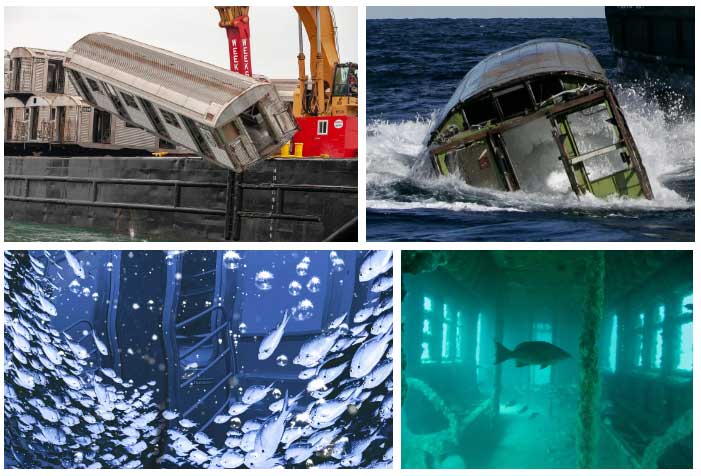
These subway cars will act as benign structures, not harming the marine ecosystem.
The magic begins when the subway cars touch the ocean floor. Almost immediately, marine life starts to invade these steel structures. The smooth surface of the subway cars provides an ideal place for algae and oysters to latch on and begin growing on the outside. This forms the basis of a food chain that soon attracts a variety of marine creatures.
Fish then seek shelter and are drawn in by the potential food source, moving into the subway cars. As the community of organisms inside and around the subway cars grows, it forms a complex, thriving ecosystem – an artificial reef. These reefs enhance biodiversity and provide new habitats for fish and other marine life. This also brings additional benefits to the fishing industry and recreational anglers, as fish populations in these areas tend to increase.
The locations where the old subway cars are dropped are not publicly disclosed, but according to local authorities, these subway cars will be continuously monitored and studied. So far, it seems that these subway cars are doing quite well in supporting marine wildlife.
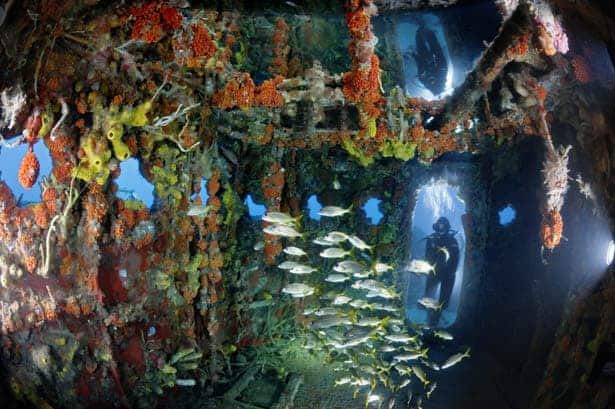
It seems these subway cars are doing quite well in supporting marine wildlife.
Jeffrey Tinsman, director of the artificial reef program at the Delaware Department of Natural Resources and Environmental Control, stated: “We have been tracking these subway cars and found that they are performing very well.”
“They have provided thousands of square feet of hard surface for invertebrates to inhabit, some species, such as blue mussels, cannot survive on natural sandy bottoms. When you compare the amount of food available on this reef to natural levels, the food available per square meter here is 400 times more than on sandy bottoms,” Tinsman shared.
Fish species like black bass are not fast swimmers, so they need structures like these to provide both food and shelter – they may not be able to swim faster than a shark, but instead, they can hide in the subway cars to escape from sharks.
Stephen Mallon’s works have been featured in an exhibition at the Kimmel Gallery. Initially, the photographs make you think that the New York City government is doing something harmful to the marine environment, but ultimately they were mistaken, and he has done an excellent job of maintaining the suspense throughout the exhibition.
At this time, New York City and most other cities in the United States have not ceased the large-scale use of subway cars for the purpose of improving the habitat for marine creatures.


















































